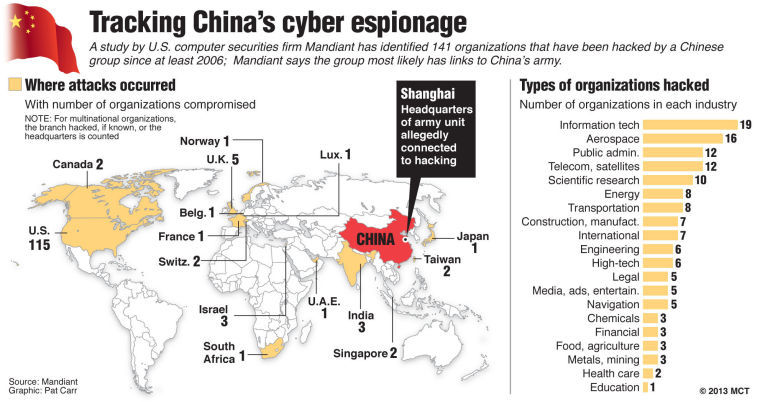Cyber Cold War could lead to technological advancements
The headlines lately have been afire with news of a “Cyber Cold War” between the United States and its rival in the eastern hemisphere, China.
The first Cold War, between the US and the Soviet Union, ended more than two decades ago, when the Soviet Union broke apart, so for most of the student body, the Cold War period was well before our time.It is something we learned about in history and from movies.
But now it looks like we may get a different cold war to make everyone paranoid.
In his recent State of the Union address, President Obama stated that “we know foreign countries and companies swipe our corporate secrets.” He also added that “our enemies are also seeking the ability to sabotage our power grid, our financial institutions, and our air traffic control systems.”
So far neither side has directly called out their “enemies” but the tensions between the United States and China are only becoming more apparent as this conflict rolls on.
The Government appears to be taking this threat seriously. At the end of January the Pentagon recently announced plans to increase its cyber security force by more 400 percent, which translate to an addition 4,000 people and new job, according to New York Times.
However, there is some concern about where all of these new cyber security professionals are going to come from.
The United States has lagged behind the rest of the world in increasingly vital STEM fields that include science, technology, engineering and math.
In 2010 the United States had 150,000 undergraduates graduate with STEM degrees, while China had over 500,000 students graduate with STEM degrees, according to The Motherboard.
This trend has been going on for a while now, meaning that as far as potential cyber soldiers go, China has the United States outnumbered.
However, the United States is not completely toothless.
The United States and Israel were responsible for the Stuxnet virus, which successfully took over the Iranian computer control systems, using them the damage nuclear centrifuges, making it the first and only cyberweapon to cause damage in the real world, according to the Guardian.
This demonstrates the potential damage to important sectors of the infrastructure and industrial systems that new technologies can inflict across international boundaries.
The author will gladly admit that she knows very little about computers, aside from the essentials like watching things on Netflix or how to navigate Tumblr, let alone cyber security, but the implications of this new threat are quite scary.
Computers are so deeply integrated into our daily lives that acts of cyber terrorism could easily derail key parts of our lives, like the banks or our power grids, or even more importantly, the Internet.
How are we supposed to put photos of what we had for lunch on Instagram if a bunch of cyber terrorists have crashed the Internet?
In the past, the fierce competition of war has brought us the microwave, the nuclear bomb, radar and stealth technology, and put a man on the moon.
As we get further into this conflict, both sides are going to be racing to outdo each other, and there is no telling what new technologies both sides will come up with. As fast as technology changes now, it is bound to be an exciting ride, now that we have added a healthy dose of fierce competition.







